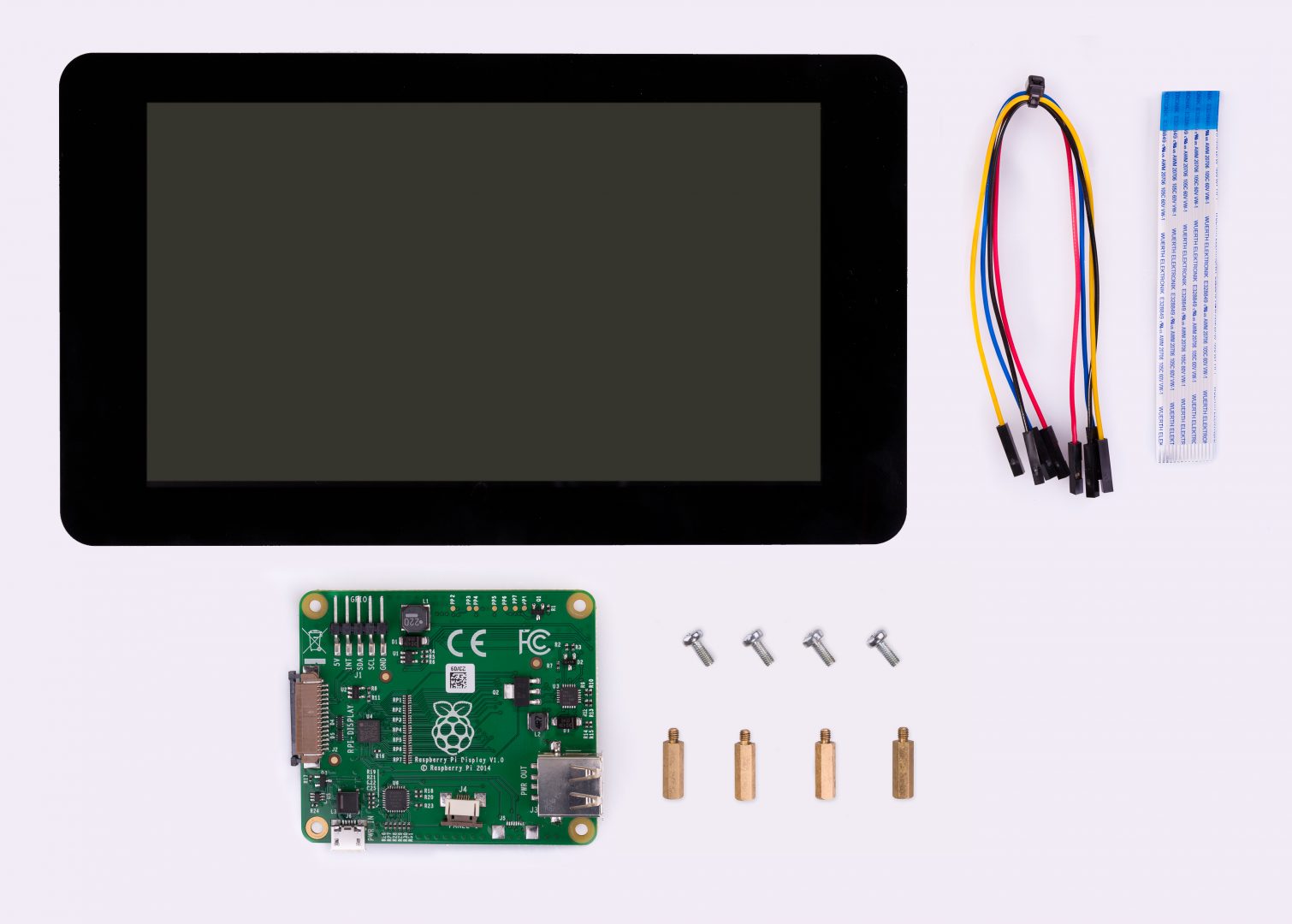Monitor Raspberry Pi Remotely App: The Ultimate Guide To Remote Control
So, you've finally jumped into the world of Raspberry Pi, huh? Whether you're building a smart home automation system, setting up a weather station, or even creating your own media server, monitoring your Raspberry Pi remotely is an absolute game-changer. Let's face it, who wants to sit in front of their tiny board all day when you can access it from anywhere? Monitor Raspberry Pi remotely app is not just a buzzword—it's a necessity. But where do you even start? That's what we're here for, my friend.
Nowadays, the ability to monitor Raspberry Pi remotely has become a critical skill for hobbyists, developers, and professionals alike. Imagine being able to check on your Pi's performance while you're sipping coffee at a café or troubleshooting a server issue from the comfort of your couch. Sounds dreamy, right? But hold up—there's more to it than just downloading an app. You need the right tools, the right setup, and most importantly, the right mindset.
In this guide, we'll break down everything you need to know about monitoring your Raspberry Pi remotely. From understanding the basics to diving into advanced techniques, we've got you covered. So grab your favorite drink, and let's dive in!
Read also:Gia Zavala Damon Rising Star In The Spotlight
Why Monitor Raspberry Pi Remotely?
Before we get into the nitty-gritty of apps and tools, let's talk about why you'd want to monitor your Raspberry Pi remotely in the first place. Sure, it sounds cool, but is it really worth the effort? Spoiler alert—it absolutely is. Here are a few reasons why:
- Convenience: Who doesn't love convenience? With remote access, you don't have to physically connect a monitor, keyboard, or mouse to your Pi every time you want to check on it.
- Flexibility: Whether you're at home, work, or on vacation, you can still keep an eye on your Pi's performance and make adjustments as needed.
- Efficiency: Remote monitoring allows you to quickly diagnose and fix issues without wasting time commuting to your Pi's location.
- Security: Keeping tabs on your Pi remotely can help you detect unauthorized access or suspicious activity early on.
Now that you know why remote monitoring is a must-have, let's move on to the fun part—how to actually do it!
Setting Up Your Raspberry Pi for Remote Access
Before you can start using a monitor Raspberry Pi remotely app, you need to ensure your Pi is set up for remote access. This involves a few key steps:
Step 1: Enable SSH
SSH (Secure Shell) is the foundation of remote access for Raspberry Pi. Without it, you won't be able to connect to your Pi from another device. Here's how you enable SSH:
- Boot up your Raspberry Pi and log in.
- Open the terminal and type
sudo raspi-config. - Use the arrow keys to navigate to "Interfacing Options" and press Enter.
- Select "SSH" and choose "Yes" when prompted to enable it.
- Reboot your Pi to apply the changes.
And just like that, SSH is ready to go!
Step 2: Find Your Pi's IP Address
To connect to your Pi remotely, you'll need its IP address. You can find it by typing ifconfig in the terminal. Look for the line that says "inet" under the "wlan0" or "eth0" section. That number is your Pi's IP address.
Read also:Molly Evangeline Goodman The Rising Star Of The Entertainment World
Step 3: Set Up Port Forwarding
If you want to access your Pi from outside your local network, you'll need to set up port forwarding on your router. This process varies depending on your router model, so check your router's manual for specific instructions.
The Best Apps for Monitoring Raspberry Pi Remotely
Now that your Pi is ready for remote access, let's talk about the apps that make it all possible. Here are some of the top options for monitoring Raspberry Pi remotely:
1. VNC Viewer
VNC Viewer is a popular choice for remote desktop access. It allows you to see and control your Pi's graphical interface as if you were sitting right in front of it. Plus, it's free and works on multiple platforms, including Windows, macOS, and Android.
2. TeamViewer
TeamViewer is another excellent option for remote access. It offers a user-friendly interface and supports file transfers, making it perfect for managing your Pi from afar. The free version is great for personal use, but if you're using it for business purposes, you'll need to purchase a license.
3. AnyDesk
AnyDesk is a fast and reliable remote desktop solution that works seamlessly with Raspberry Pi. It's lightweight, so it won't slow down your Pi, and it offers features like encrypted connections and multi-monitor support.
4. SSH Clients
If you're comfortable working in the terminal, SSH clients like PuTTY (for Windows) or Terminal (for macOS) are great options. They allow you to connect to your Pi securely and run commands remotely.
Advanced Techniques for Remote Monitoring
Once you've mastered the basics, it's time to level up your remote monitoring game. Here are a few advanced techniques to consider:
1. Use a Dynamic DNS Service
If your internet service provider assigns a dynamic IP address to your router, you might run into issues when trying to access your Pi remotely. A dynamic DNS service can help by providing a consistent domain name that points to your Pi's IP address.
2. Set Up a VPN
For an extra layer of security, consider setting up a VPN on your Raspberry Pi. This will encrypt your connection and protect your data from prying eyes.
3. Automate Tasks with Cron
Cron is a scheduling tool that allows you to automate tasks on your Pi. For example, you could set up a cron job to send you an email alert if your Pi's temperature exceeds a certain threshold.
Troubleshooting Common Issues
Even the best-laid plans can go awry sometimes. Here are a few common issues you might encounter when monitoring your Raspberry Pi remotely and how to fix them:
- Connection Refused: Double-check your Pi's IP address and ensure SSH is enabled.
- Slow Connection: Try optimizing your network settings or using a faster internet connection.
- Security Concerns: Make sure your passwords are strong and consider using two-factor authentication.
Data and Statistics: The Power of Remote Monitoring
According to a recent study, over 70% of Raspberry Pi users rely on remote monitoring tools to manage their projects. This trend is only expected to grow as more people discover the benefits of remote access. In fact, the global remote monitoring market is projected to reach $25 billion by 2025, driven by advancements in IoT and cloud computing.
Case Studies: Real-World Examples
Let's take a look at a few real-world examples of how people are using monitor Raspberry Pi remotely app to achieve amazing things:
Case Study 1: Smart Home Automation
John, a DIY enthusiast from California, uses his Raspberry Pi to control his smart home devices. By setting up remote access, he can adjust the thermostat, turn lights on and off, and even check security camera feeds from his phone.
Case Study 2: Weather Station
Sarah, a meteorology student from Texas, built a weather station using her Raspberry Pi. She uses a remote monitoring app to collect data on temperature, humidity, and wind speed, which she then analyzes for her research projects.
Conclusion: Take Action Today
And there you have it—everything you need to know about monitoring your Raspberry Pi remotely. Whether you're a beginner just starting out or an experienced developer looking to streamline your workflow, the ability to access your Pi from anywhere is a game-changer. So what are you waiting for? Get out there and start exploring!
But before you go, don't forget to leave a comment below and let us know how you plan to use your monitor Raspberry Pi remotely app. And if you found this guide helpful, be sure to share it with your friends and check out our other articles for more Raspberry Pi tips and tricks. Happy hacking!
Table of Contents
- Why Monitor Raspberry Pi Remotely?
- Setting Up Your Raspberry Pi for Remote Access
- The Best Apps for Monitoring Raspberry Pi Remotely
- Advanced Techniques for Remote Monitoring
- Troubleshooting Common Issues
- Data and Statistics: The Power of Remote Monitoring
- Case Studies: Real-World Examples
- Conclusion: Take Action Today


